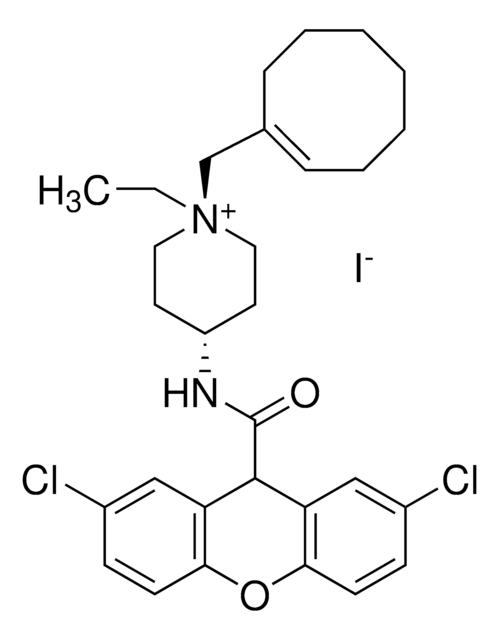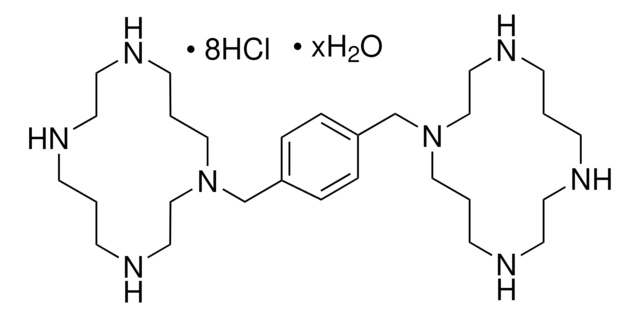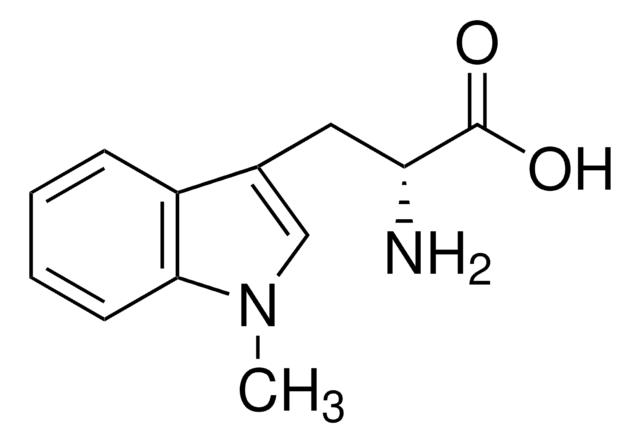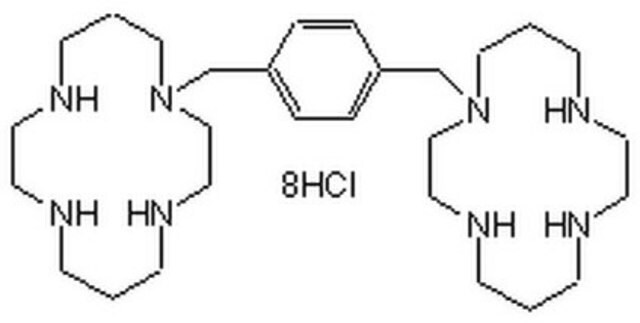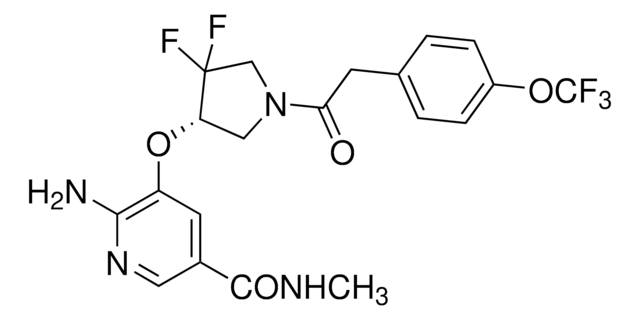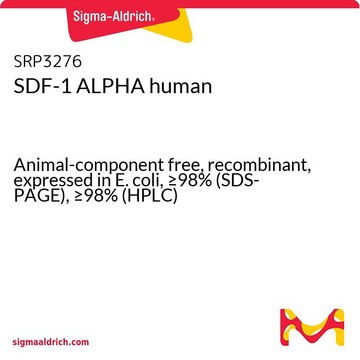SML1720
ATI-2341 trifluoroacetate salt
≥95% (HPLC)
別名:
ATI 2341 trifluoroacetate salt, N-(1-Ohexadecyl)-L-methionylglycyl-L-tyrosyl-L-glutaminyl-L-lysyl-L-lysyl-L-leucyl-L-arginyl-L-seryl-L-methionyl-L-threonyl-L-α-aspartyl-L-lysyl-L-tyrosyl-L-arginyl- L-leucine, Pal-MGYQKKLRSMTDKYRL, Pal-Met-Gly-Tyr-Gln-Lys-Lys-Leu-Arg-Ser-Met-Thr-Asp-Lys-Tyr-Arg-Leu
ログイン組織・契約価格を表示する
すべての画像(1)
About This Item
実験式(ヒル表記法):
C104H178N26O25S2 · xC2HF3O2
CAS番号:
分子量:
2256.82 (free base basis)
UNSPSCコード:
12352200
NACRES:
NA.77
おすすめの製品
生物化学的/生理学的作用
ATI-2341 is a potent and selective allosteric agonist of chemokine CXC-type receptor 4 (CXCR4) that functions as a biased ligand, favoring Gαi activation over Gα13. ATI-2341 does not promote β-arrestin recruitment. ATI-2341 promotes the mobilization of PMNs and HSPCs in the peripheral circulation of both mice and monkeys.
ATI-2341 is a potent and selective allosteric agonist of chemokine CXC-type receptor 4 (CXCR4).
保管分類コード
11 - Combustible Solids
WGK
WGK 3
引火点(°F)
Not applicable
引火点(℃)
Not applicable
最新バージョンのいずれかを選択してください:
Jesús M Planesas et al.
Journal of molecular graphics & modelling, 60, 1-14 (2015-06-17)
Several examples of allosteric modulators of GPCRs have been reported recently in the literature, but understanding their molecular mechanism presents a new challenge for medicinal chemistry. For the specific case of the cellular receptor CXCR4, it is known that pepducins
Julie Quoyer et al.
Proceedings of the National Academy of Sciences of the United States of America, 110(52), E5088-E5097 (2013-12-07)
Short lipidated peptide sequences derived from various intracellular loop regions of G protein-coupled receptors (GPCRs) are named pepducins and act as allosteric modulators of a number of GPCRs. Recently, a pepducin selectively targeting the C-X-C chemokine receptor type 4 (CXCR4)
Boris Tchernychev et al.
Proceedings of the National Academy of Sciences of the United States of America, 107(51), 22255-22259 (2010-12-09)
The G protein-coupled receptor (GPCR), chemokine CXC-type receptor 4 (CXCR4), and its ligand, CXCL12, mediate the retention of polymorphonuclear neutrophils (PMNs) and hematopoietic stem and progenitor cells (HSPCs) in the bone marrow. Agents that disrupt CXCL12-mediated chemoattraction of CXCR4-expressing cells
ライフサイエンス、有機合成、材料科学、クロマトグラフィー、分析など、あらゆる分野の研究に経験のあるメンバーがおります。.
製品に関するお問い合わせはこちら(テクニカルサービス)
